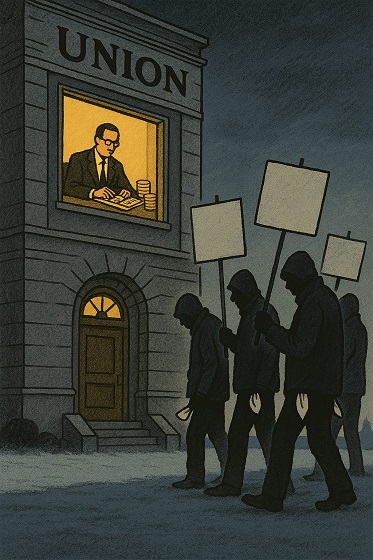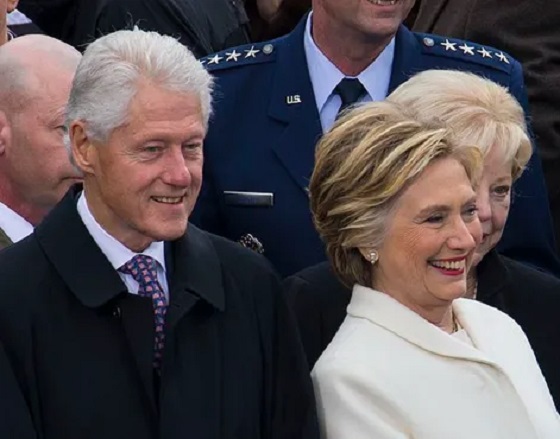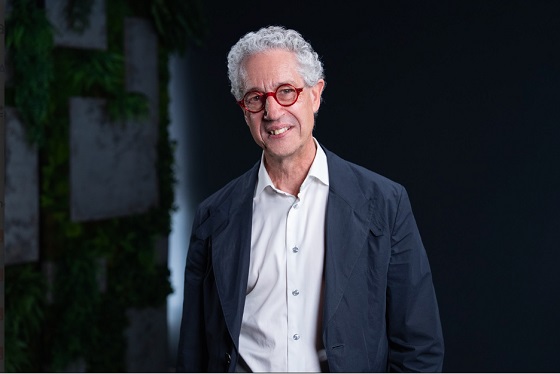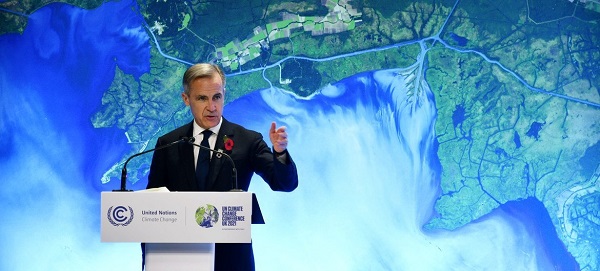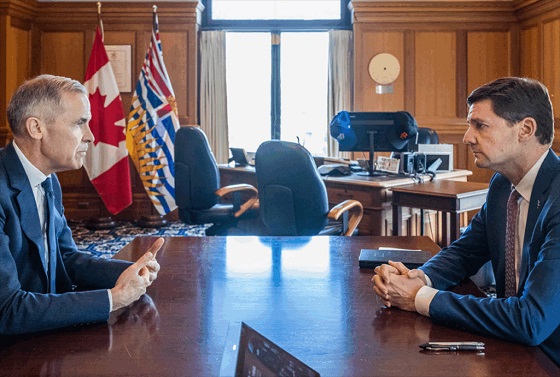Business
Canada’s struggle against transnational crime & money laundering
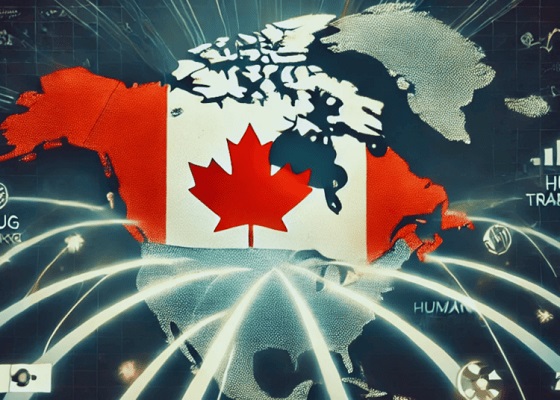
From the Macdonald-Laurier Institute
By Alex Dalziel and Jamie Ferrill
In this episode of the Macdonald-Laurier Institute’s Inside Policy Talks podcast, Senior Fellow and National Security Project Lead Alex Dalziel explores the underreported issue of trade-based money laundering (TBML) with Dr. Jamie Ferrill, the head of financial crime studies at Charles Sturt University in Canberra, Australia and a former Canada Border Services Agency officer.
The discussion focuses on how organized crime groups use global trade transactions to disguise illicit proceeds and the threat this presents to the Canada’s trade relationship with the US and beyond.
Definition of TBML: Trade-based money laundering disguises criminal proceeds by moving value through trade transactions instead of transferring physical cash. Criminals (usually) exploit international trade by manipulating trade documents, engaging in phantom shipping, and altering invoices to disguise illicit funds as legitimate commerce, bypassing conventional financial scrutiny. As Dr. Ferrill explains, “we have dirty money that’s been generated through things like drug trafficking, human trafficking, arms trafficking, sex trafficking, and that money needs to be cleaned in one way or another. Trade is one of the ways that that’s done.”
A Pervasive Problem: TBML is challenging to detect due to the vast scale and complexity of global trade, making it an attractive channel for organized crime groups. Although global estimates are imprecise, the Financial Action Task Force and The United Nations Office on Drugs and Crime (UNODC) suggests 2-5% of GDP could be tied to money laundering, representing trillions of dollars annually. In Canada, this could mean over $70 billion in potentially laundered funds each year. Despite the scope of TBML, Canada has seen no successful prosecutions for criminal money laundering through trade, highlighting significant gaps in identifying, investigating and prosecuting these complex cases.
Canada’s Vulnerabilities: Along with the sheer volume and complexity of global trade, Canada’s vulnerabilities stem from gaps in anti-money laundering regulation, particularly in high-risk sectors like real estate, luxury goods, and legal services, where criminals exploit weak oversight. Global trade exemplifies the vulnerabilities in oversight, where gaps and limited controls create substantial opportunities for money laundering. A lack of comprehensive export controls also limits Canada’s ability to monitor goods leaving the country effectively. Dr. Ferrill notes that “If we’re seen as this weak link in the process, that’s going to have significant implications on trade partnerships,” underscoring the potential political risks to bilateral trade if Canada fails to address these issues.
International and Private Sector Cooperation: Combating TBML effectively requires strong international cooperation, particularly between Canada and key trade partners like the U.S. The private sector—including freight forwarders, customs brokers, and financial institutions—plays a crucial role in spotting suspicious activities along the supply chain. As Dr. Ferrill emphasizes, “Canada and the U.S. can definitely work together more efficiently and effectively to share and then come up with some better strategies,” pointing to the need for increased collaboration to strengthen oversight and disrupt these transnational crime networks.
Looking to further understand the threat of transnational organized crime to Canada’s borders?
Check out Inside Policy Talks recent podcasts with Christian Leuprecht, Todd Hataley and Alan Bersin.
To learn more about Dr. Ferrill’s research on TBML, check out her chapter in Dirty Money: Financial Crime in Canada.
Business
Canada is failing dismally at our climate goals. We’re also ruining our economy.

From the Fraser Institute
By Annika Segelhorst and Elmira Aliakbari
Short-term climate pledges simply chase deadlines, not results
The annual meeting of the United Nations Conference of the Parties, or COP, which is dedicated to implementing international action on climate change, is now underway in Brazil. Like other signatories to the Paris Agreement, Canada is required to provide a progress update on our pledge to reduce greenhouse gas (GHG) emissions by 40 to 45 per cent below 2005 levels by 2030. After decades of massive government spending and heavy-handed regulations aimed at decarbonizing our economy, we’re far from achieving that goal. It’s time for Canada to move past arbitrary short-term goals and deadlines, and instead focus on more effective ways to support climate objectives.
Since signing the Paris Agreement in 2015, the federal government has introduced dozens of measures intended to reduce Canada’s carbon emissions, including more than $150 billion in “green economy” spending, the national carbon tax, the arbitrary cap on emissions imposed exclusively on the oil and gas sector, stronger energy efficiency requirements for buildings and automobiles, electric vehicle mandates, and stricter methane regulations for the oil and gas industry.
Recent estimates show that achieving the federal government’s target will impose significant costs on Canadians, including 164,000 job losses and a reduction in economic output of 6.2 per cent by 2030 (compared to a scenario where we don’t have these measures in place). For Canadian workers, this means losing $6,700 (each, on average) annually by 2030.
Yet even with all these costly measures, Canada will only achieve 57 per cent of its goal for emissions reductions. Several studies have already confirmed that Canada, despite massive green spending and heavy-handed regulations to decarbonize the economy over the past decade, remains off track to meet its 2030 emission reduction target.
And even if Canada somehow met its costly and stringent emission reduction target, the impact on the Earth’s climate would be minimal. Canada accounts for less than 2 per cent of global emissions, and that share is projected to fall as developing countries consume increasing quantities of energy to support rising living standards. In 2025, according to the International Energy Agency (IEA), emerging and developing economies are driving 80 per cent of the growth in global energy demand. Further, IEA projects that fossil fuels will remain foundational to the global energy mix for decades, especially in developing economies. This means that even if Canada were to aggressively pursue short-term emission reductions and all the economic costs it would imposes on Canadians, the overall climate results would be negligible.
Rather than focusing on arbitrary deadline-contingent pledges to reduce Canadian emissions, we should shift our focus to think about how we can lower global GHG emissions. A recent study showed that doubling Canada’s production of liquefied natural gas and exporting to Asia to displace an equivalent amount of coal could lower global GHG emissions by about 1.7 per cent or about 630 million tonnes of GHG emissions. For reference, that’s the equivalent to nearly 90 per cent of Canada’s annual GHG emissions. This type of approach reflects Canada’s existing strength as an energy producer and would address the fastest-growing sources of emissions, namely developing countries.
As the 2030 deadline grows closer, even top climate advocates are starting to emphasize a more pragmatic approach to climate action. In a recent memo, Bill Gates warned that unfounded climate pessimism “is causing much of the climate community to focus too much on near-term emissions goals, and it’s diverting resources from the most effective things we should be doing to improve life in a warming world.” Even within the federal ministry of Environment and Climate Change, the tone is shifting. Despite the 2030 emissions goal having been a hallmark of Canadian climate policy in recent years, in a recent interview, Minister Julie Dabrusin declined to affirm that the 2030 targets remain feasible.
Instead of scrambling to satisfy short-term national emissions limits, governments in Canada should prioritize strategies that will reduce global emissions where they’re growing the fastest.

Elmira Aliakbari
Artificial Intelligence
Lawsuit Claims Google Secretly Used Gemini AI to Scan Private Gmail and Chat Data

Whether the claims are true or not, privacy in Google’s universe has long been less a right than a nostalgic illusion.
|
When Google flipped a digital switch in October 2025, few users noticed anything unusual.
Gmail loaded as usual, Chat messages zipped across screens, and Meet calls continued without interruption.
Yet, according to a new class action lawsuit, something significant had changed beneath the surface.
We obtained a copy of the lawsuit for you here.
Plaintiffs claim that Google silently activated its artificial intelligence system, Gemini, across its communication platforms, turning private conversations into raw material for machine analysis.
The lawsuit, filed by Thomas Thele and Melo Porter, describes a scenario that reads like a breach of trust.
It accuses Google of enabling Gemini to “access and exploit the entire recorded history of its users’ private communications, including literally every email and attachment sent and received.”
The filing argues that the company’s conduct “violates its users’ reasonable expectations of privacy.”
Until early October, Gemini’s data processing was supposedly available only to those who opted in.
Then, the plaintiffs claim, Google “turned it on for everyone by default,” allowing the system to mine the contents of emails, attachments, and conversations across Gmail, Chat, and Meet.
The complaint points to a particular line in Google’s settings, “When you turn this setting on, you agree,” as misleading, since the feature “had already been switched on.”
This, according to the filing, represents a deliberate misdirection designed to create the illusion of consent where none existed.
There is a certain irony woven through the outrage. For all the noise about privacy, most users long ago accepted the quiet trade that powers Google’s empire.
They search, share, and store their digital lives inside Google’s ecosystem, knowing the company thrives on data.
The lawsuit may sound shocking, but for many, it simply exposes what has been implicit all along: if you live in Google’s world, privacy has already been priced into the convenience.
Thele warns that Gemini’s access could expose “financial information and records, employment information and records, religious affiliations and activities, political affiliations and activities, medical care and records, the identities of his family, friends, and other contacts, social habits and activities, eating habits, shopping habits, exercise habits, [and] the extent to which he is involved in the activities of his children.”
In other words, the system’s reach, if the allegations prove true, could extend into nearly every aspect of a user’s personal life.
The plaintiffs argue that Gemini’s analytical capabilities allow Google to “cross-reference and conduct unlimited analysis toward unmerited, improper, and monetizable insights” about users’ private relationships and behaviors.
The complaint brands the company’s actions as “deceptive and unethical,” claiming Google “surreptitiously turned on this AI tracking ‘feature’ without informing or obtaining the consent of Plaintiffs and Class Members.” Such conduct, it says, is “highly offensive” and “defies social norms.”
The case invokes a formidable set of statutes, including the California Invasion of Privacy Act, the California Computer Data Access and Fraud Act, the Stored Communications Act, and California’s constitutional right to privacy.
Google is yet to comment on the filing.
|
|
|
|
Reclaim The Net is reader-supported. Consider becoming a paid subscriber.
|
|
|
|
-

 Great Reset2 days ago
Great Reset2 days agoAre climate-obsessed elites losing their grip over global politics?
-

 Business21 hours ago
Business21 hours agoCanada is failing dismally at our climate goals. We’re also ruining our economy.
-
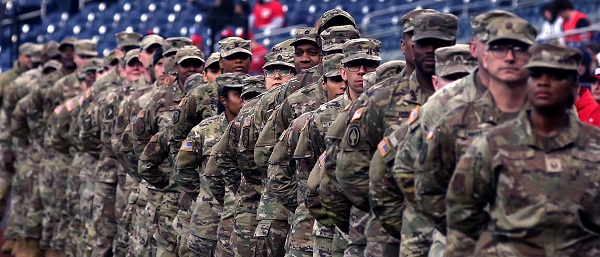
 Daily Caller2 days ago
Daily Caller2 days agoDemocrats Explicitly Tell Spy Agencies, Military To Disobey Trump
-
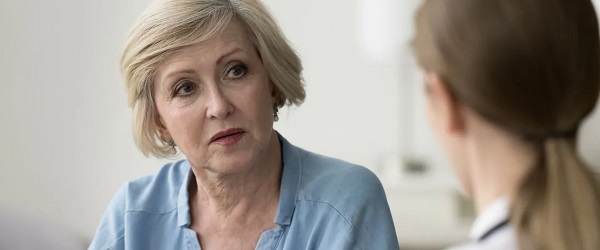
 Alberta2 days ago
Alberta2 days agoAlberta on right path to better health care
-

 Crime1 day ago
Crime1 day ago‘Modern-Day Escobar’: U.S. Says Former Canadian Olympian Ran Cocaine Pipeline with Cartel Protection and a Corrupt Toronto Lawyer
-
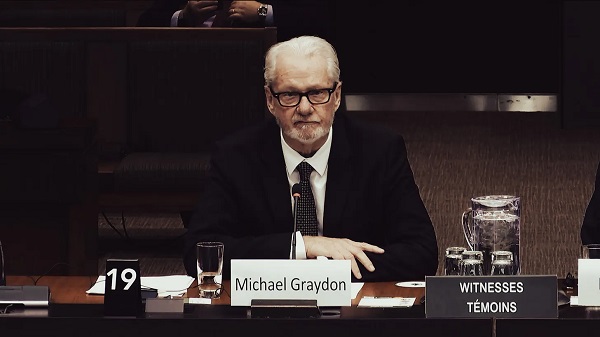
 Business2 days ago
Business2 days agoNearly One-Quarter of Consumer-Goods Firms Preparing to Exit Canada, Industry CEO Warns Parliament
-

 Daily Caller2 days ago
Daily Caller2 days agoALAN DERSHOWITZ: Can Trump Legally Send Troops Into Our Cities? The Answer Is ‘Wishy-Washy’
-
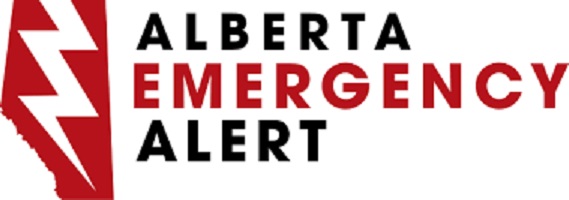
 Alberta1 day ago
Alberta1 day agoAlberta Emergency Alert test – Wednesday at 1:55 PM





